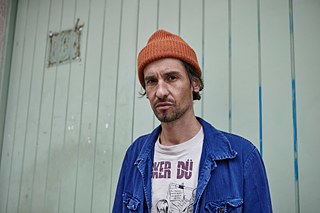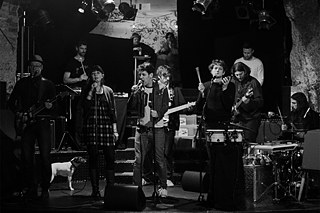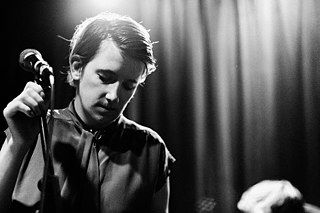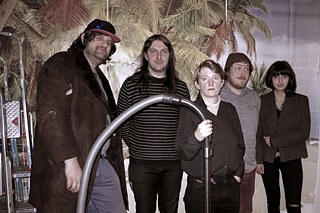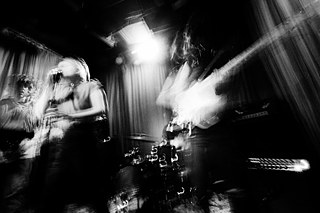Underground Music
The MUS: The Munich Underground Scene
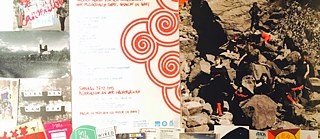
“There’s an underground scene in Munich?! I didn’t know there was a scene for anything at all!” is the reaction I get from everyone, everywhere, when I talk to them about my passion for the Munich Underground Scene. Well, it’s true—such a thing does exist! It’s dynamic, constantly changing and pushes the limits of music genres such as experimental electro, noise or krautrock.
Two years ago in Montreal, I discovered “Die Schule von Kamerakino”, a network of musicians from Munich gravitating around Nick McCarthy, a guitarist for the well-known band Franz Ferdinand, who was born in England but grew up in Bavaria. I was hooked and became insatiably curious about the complex web of artists rocking Munich with unclassifiable—sometimes even inexplicable—sounds recorded under labels such as Schamoni Musik, Raketenbasis Haberlandstrasse and Alien Transistor. Unique sounds, all a far cry from the tech house played in clubs, the Britpop of emerging groups and the Schlager music heard in the Biergarten. In other words: underground sounds.
Beyond Munich Disco
Although krautrock pioneers such as Amon Düül and Embryo made Munich their home in the early ’70s, the Bavarian capital had little influence on German pop until the arrival of Italian producer Giorgio Moroder. He was responsible for giving the city its hedonistic image with the huge hits produced in the mid-’70s for Donna Summer (I Feel Love, Love To Love). Munich became the city of the Munich Disco sound.After the techno wave of the ’90s, DJ Hell (Gigolo Records), with his weakness for the electroclash style (Fischerspooner, Zombie Nation, Miss Kittin), allowed Munich to remain on the pop music radar. Since the turn of the century, some of the most promising artists, such as Chicks on Speed, Darak & Grinser and DJ and producer Tobi Neuman, have headed to Berlin. As for the labels Compost, Gomma and Permanent Vacation Records, they remained on the banks of the Isar River and continue to supply their electronic music to clubs worldwide. We shouldn’t overlook Munich’s remarkable brass/folk scene, of which LaBrassBanda is one example. This group, which originated in the Bavarian Alps, is invited to play in festivals throughout the world, singing not in German or English, but in Bavarian! In Bavaria, the vast majority of people are proud of their traditional (music) culture, which makes it hard for the pop scene, let alone the underground one, to carve out a place for itself!
Underground Networks
The Munich Underground Scene (MUS) is made up of fragmented networks of musicians, performers, poets and even visual artists. Ranging in age from 30 to 60, many are passionately devoted to their music, without necessarily seeking success at any cost. Their main goal is to play music, while braving the exorbitant cost of living, the omnipresence of traditional culture and the exodus of groups towards Berlin. In fact, practically none of them live from their art. When not on stage or spinning records, they can be found bartending or serving customers at neighbourhood coffee shops. From time to time, certain names from the underground scene reach the wider German public. Among these is Das Weiße Pferd, a prolific band consisting of seven of Munich’s most talented musicians that produce political texts that provoke. This band, with roots in Krautrock, creates “combat rock”, according to the band’s own classification of its sound. Another is Friends of Gas, an innovative post-punk project whose gripping songs, earworm-inducing sounds and mind-blowing stage presence get crowds dancing. Also worth mentioning is LeRoy, a member of the groups Das Hobos and Rhytm Police, whose first album Skläsh was a huge success on the electronic music scene in Europe.
Though many may not like it, the MUS is so dynamic that Munich could also be called “the city of hard choices.” Night owls are too often torn between at least two concerts and three DJ sets. In one night, the same faces can be seen in three or four different places: the artists from the 8 p.m. show at the 4 a.m. DJ set three blocks away. It’s the same familiar, cheerful nightlife crowd that ends up night after night in these bars that they know by heart, and later head to the same cafés of the vibrant Glockenbachviertel district for breakfast. So yes, there’s definitely a scene in Munich, and it is indeed also an underground one.
